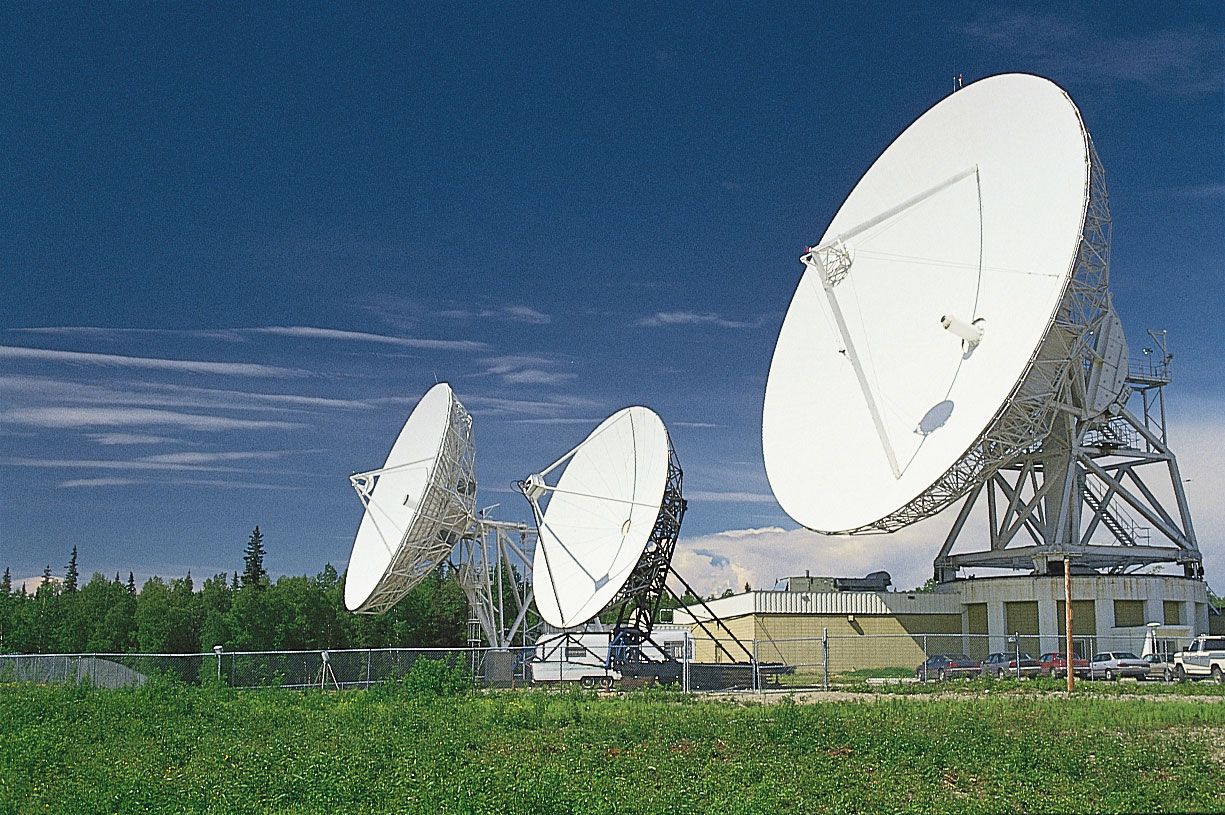Home>Production & Technology>Sound>How Fast Is The Speed Of Sound In MPH


Sound
How Fast Is The Speed Of Sound In MPH
Published: October 26, 2023
Discover the speed of sound in miles per hour. Learn fascinating facts about sound and understand how it travels.
(Many of the links in this article redirect to a specific reviewed product. Your purchase of these products through affiliate links helps to generate commission for AudioLover.com, at no extra cost. Learn more)
Table of Contents
- Introduction
- What is the Speed of Sound?
- Measuring the Speed of Sound
- Factors Affecting the Speed of Sound
- Speed of Sound in Different Mediums
- Speed of Sound in Air
- Speed of Sound in Water
- Speed of Sound in Solids
- Comparison of Speed of Sound in Different Mediums
- Conversion of Speed of Sound from m/s to MPH
- Conclusion
Introduction
The speed of sound is a fascinating concept that plays a significant role in our everyday lives, even if we often take it for granted. It is the rate at which sound waves travel through a medium, such as air, water, or solid objects. Understanding the speed of sound not only helps us appreciate the science behind sound propagation but also improves our understanding of various phenomena.
In this article, we will delve into the intricacies of the speed of sound and explore its different aspects. From its measurement techniques to factors affecting its velocity, we will uncover the mysteries surrounding this fundamental property of sound.
Furthermore, we will examine the speed of sound in different mediums, including air, water, and solids. Each medium exhibits unique properties that influence how sound travels within it. By comparing and contrasting these speeds, we can gain valuable insights into the behavior of sound waves in various environments.
Lastly, we will explore how the speed of sound can be converted from its standard unit of meters per second (m/s) to miles per hour (MPH). Understanding these conversions allows us to better comprehend the speed of sound in everyday terms and relate it to other familiar forms of measurement.
By the end of this article, you will have a comprehensive understanding of the speed of sound and its significance in different mediums. So, let’s dive into the exciting world of sound and discover just how fast it can travel!
What is the Speed of Sound?
The speed of sound refers to the rate at which sound wave vibrations propagate through a medium. It represents the velocity at which sound travels from its source to a given location. Sound waves are produced when an object vibrates, causing disturbances in the surrounding medium, which then propagate as waves.
In most cases, when we refer to the speed of sound, we are talking about its velocity through air, which is the most common medium for sound transmission. However, sound can also travel through other substances, such as water and solids, each with its own unique speed.
In general, the speed of sound is determined by the properties of the medium it is traveling through, such as density, elasticity, and temperature. These factors influence the speed at which the sound waves can propagate, resulting in variations in the speed of sound across different substances.
In a standard atmosphere at sea level, the speed of sound in dry air is approximately 343 meters per second (m/s), or about 1,235 kilometers per hour (km/h). However, this value is subject to changes caused by various factors, including temperature, humidity, and altitude.
It is important to note that the speed of sound is not constant and can vary depending on the conditions of the medium. For example, at higher temperatures, air molecules move with greater energy and thus sound waves can travel faster. In contrast, colder temperatures can result in slower sound propagation.
Understanding the speed of sound is crucial as it allows us to predict and analyze the behavior of sound waves in different scenarios. Whether it’s assessing the acoustics of a concert hall, understanding the Doppler effect, or designing effective communication systems, knowledge of the speed of sound is essential in various scientific and practical applications.
Next, we will explore the different methods used to measure the speed of sound and the factors that can influence its velocity.
Measuring the Speed of Sound
To determine the speed of sound in a given medium, various experimental methods and techniques are employed. These measurements help scientists and researchers understand the behavior of sound waves and validate theoretical models.
One of the most common methods used to measure the speed of sound is the time-of-flight method. This approach involves measuring the time it takes for a sound wave to travel a known distance. By dividing the distance traveled by the time taken, the speed of sound can be calculated.
In a simple setup, a source of sound, such as a loudspeaker, is placed at one end of the measurement path, and a receiver, such as a microphone, is positioned at the other end. The distance between the two points is carefully measured.
The sound wave is generated, and the time it takes for the wave to reach the receiver is measured using precise timing equipment or by analyzing the waveform captured by the receiver. Dividing the measured distance by the time taken gives us the speed of sound.
Another method commonly employed is the resonance method. This technique utilizes resonance chambers or tubes of known length to measure the speed of sound. By adjusting the length of the tube and finding the resonance frequency, the speed of sound can be calculated using known formulas.
Other advanced techniques, such as interferometry, diffraction, and ultrasound, are also used to measure the speed of sound in specific scenarios and for more precise measurements.
It is important to note that when conducting these measurements, factors such as temperature, humidity, and atmospheric pressure are taken into account. These environmental factors can influence the speed of sound and must be controlled or measured accurately to obtain reliable results.
Measuring the speed of sound in different mediums allows scientists and engineers to gain a deeper understanding of the fundamental properties of sound and its behavior. Through these measurements, we can create more accurate mathematical models and make informed decisions in various fields, including acoustics, aviation, telecommunications, and many more.
Next, let’s explore the factors that can affect the speed of sound and how different mediums can impact its velocity.
Factors Affecting the Speed of Sound
The speed of sound in a medium is influenced by several factors that affect the propagation of sound waves. Understanding these factors helps us grasp the complexities of sound transmission and how it can vary in different environments.
1. Temperature: Temperature has a significant impact on the speed of sound. In general, as temperature increases, the speed of sound also increases. This is because higher temperatures result in faster molecular motion, leading to quicker sound wave propagation. Conversely, at lower temperatures, molecules move slower, causing a decrease in the speed of sound.
2. Density: The density of a medium plays a role in determining the speed of sound. As density increases, the speed of sound decreases. This is because denser materials have greater resistance to the motion of molecules, impeding the transmission of sound waves. Conversely, less dense substances allow sound waves to propagate more easily, resulting in a higher speed of sound.
3. Elasticity: Elasticity refers to the ability of a medium to return to its original shape after being deformed. Materials with higher elasticity, such as solids, allow sound waves to travel faster. This is because the molecules in these materials can quickly transmit the vibrational energy of the sound wave, resulting in a higher speed of sound. In contrast, less elastic materials, like liquids and gases, have lower speeds of sound.
4. Pressure: Changes in pressure can impact the speed of sound. In general, an increase in pressure leads to a higher speed of sound, while a decrease in pressure results in a lower speed. This is due to the effect of pressure on the density and elasticity of the medium.
5. Humidity: Humidity refers to the amount of water vapor present in the air. The presence of moisture can slightly affect the speed of sound. Higher humidity levels can result in a slightly lower speed due to the additional mass of water vapor molecules in the air. However, the effect of humidity on the speed of sound is relatively small compared to other factors.
It is important to note that these factors can interact with each other, leading to more complex variations in the speed of sound. Scientists and researchers carefully consider these factors when studying sound propagation in different mediums and when designing systems or structures that rely on accurate sound transmission.
Next, let’s explore the speed of sound in specific mediums such as air, water, and solids.
Speed of Sound in Different Mediums
The speed of sound varies depending on the medium through which it travels. Each medium has unique properties that affect the propagation of sound waves. In this section, we will explore the speed of sound in different mediums, including air, water, and solids.
Speed of Sound in Air: In dry air at sea level, the speed of sound is approximately 343 meters per second (m/s), or about 767 miles per hour (mph). However, this value can vary depending on temperature, humidity, and atmospheric pressure. As mentioned earlier, higher temperatures result in faster sound propagation, while colder temperatures slow it down.
Speed of Sound in Water: In pure water at room temperature, the speed of sound is around 1,482 meters per second (m/s), or approximately 3,320 miles per hour (mph). Unlike air, the speed of sound in water is much higher due to its higher density and greater elasticity. Water also has the ability to transmit sound over longer distances compared to air.
Speed of Sound in Solids: The speed of sound in solids is significantly higher than in both air and water. For example, in iron, the speed of sound is approximately 5,120 meters per second (m/s), or around 11,450 miles per hour (mph). This is because solids have a higher density and greater elasticity, allowing sound waves to propagate faster and more efficiently.
It is important to note that different materials within each medium can have varying speeds of sound. For example, sound travels at different speeds in different types of metals or different types of wood. These variations are due to differences in density, elasticity, and atomic structure.
Understanding the speed of sound in different mediums is crucial in various applications. For example, it helps engineers design underwater communication systems or seismic detectors that utilize sound waves traveling through water or solid materials. The speed of sound also influences the behavior of sound in musical instruments or the acoustics of concert halls.
Next, let’s examine a comparison of the speed of sound in different mediums to further understand their differences.
Speed of Sound in Air
When we talk about the speed of sound, we often refer to its velocity through air, as it is the most common medium for sound propagation in our everyday lives. The speed of sound in air varies depending on various factors such as temperature, humidity, and atmospheric pressure.
In dry air at a temperature of 20 degrees Celsius (68 degrees Fahrenheit), the speed of sound is approximately 343 meters per second (m/s), or about 767 miles per hour (mph). This value is often used as a standard reference for the speed of sound in air.
However, it is important to note that the speed of sound is not constant and can change based on the environmental conditions. Temperature plays a significant role in affecting the speed of sound in air. As the temperature increases, air molecules move with greater energy, resulting in faster sound wave propagation. Conversely, colder temperatures lead to slower molecular motion and a decrease in the speed of sound.
Humidity also has a minor influence on the speed of sound in air. Moisture in the air adds additional mass to the molecules, slightly reducing the speed of sound. However, the effect of humidity on the speed of sound is relatively small compared to temperature.
Another factor to consider is atmospheric pressure. Changes in pressure can affect the density of the air, which, in turn, has an impact on the speed of sound. In general, higher atmospheric pressure leads to a slightly faster speed of sound, while lower pressure results in a slightly slower speed.
It is interesting to note that the speed of sound in air is faster at higher altitudes. This is because the air at higher altitudes is generally colder, leading to slower molecular motion and a decrease in the speed of sound. However, the decrease in air density at higher altitudes compensates for the decrease in speed, resulting in a similar speed of sound compared to sea level measurements.
Understanding the speed of sound in air is crucial in various fields. It is essential in aviation for calculating the speed of aircraft in relation to the speed of sound (known as Mach number). Also, in areas such as meteorology and climate science, knowledge of the speed of sound in air is used to analyze the propagation and behavior of sound waves in the atmosphere.
Next, let’s explore the speed of sound in other mediums, such as water and solids, to further understand their unique characteristics.
Speed of Sound in Water
Water, being a denser medium than air, allows sound waves to propagate at a higher speed. The speed of sound in water is approximately 1,482 meters per second (m/s), or about 3,320 miles per hour (mph), at room temperature.
The higher speed of sound in water compared to air is primarily due to water’s higher density and greater elasticity. The close proximity of water molecules allows sound waves to travel more efficiently through the medium.
Unlike in air, changes in temperature and humidity have a minimal effect on the speed of sound in water. Instead, the primary factors influencing the speed of sound in water are temperature and salinity. Warmer water tends to have a slightly higher speed of sound, while colder water results in a slightly lower speed.
It is interesting to note that the speed of sound in water is significantly faster than in air. This property is valuable in underwater acoustics and communication systems. Sound travels much farther and more efficiently through water, allowing for long-range underwater communication and the use of sonar technology to map the ocean floor or detect underwater objects.
The speed of sound in water can also vary depending on the types of impurities or dissolved substances present. For example, the speed of sound in saltwater is slightly higher than in freshwater due to the increased density caused by the presence of salt.
Understanding the speed of sound in water is crucial in various applications. Scientists and researchers utilize this knowledge to study marine life, investigate underwater seismic activity, and design sonar systems for navigation and military purposes.
By comprehending the speed of sound in water, we can unlock a deeper understanding of the acoustic properties of our oceans and harness this knowledge for scientific, engineering, and practical purposes.
Next, let’s explore the speed of sound in another medium, solids, and see how it differs from the speed of sound in air and water.
Speed of Sound in Solids
When it comes to transmitting sound waves, solids are known for their high speed of sound compared to both air and water. The speed of sound in solids can vary depending on the material and its properties.
In general, the speed of sound in solids is significantly higher than in air or water. For example, in iron, the speed of sound is approximately 5,120 meters per second (m/s), or around 11,450 miles per hour (mph). This is because solids have a higher density and greater elasticity, allowing sound waves to propagate faster and more efficiently.
Unlike in air and water, where temperature and humidity have noticeable effects on the speed of sound, the impact of these factors on solids is minimal. Instead, properties such as density, elasticity (Young’s modulus), and the atomic structure of the material play major roles in determining the speed of sound in solids.
Denser materials typically have higher speeds of sound since the molecules or atoms are closely packed together, enabling efficient transmission of sound waves. For example, diamond, with its high density, has an extremely high speed of sound compared to other materials.
Elasticity is another critical factor. A highly elastic material can quickly transmit the vibrational energy of sound waves, resulting in a higher speed. Metals, such as iron or aluminum, which have high elasticity, demonstrate faster sound propagation.
The atomic structure of a solid also influences the speed of sound. Crystalline materials, with their regular patterns of atoms, allow sound waves to travel more efficiently and at higher speeds compared to amorphous materials, which lack a defined atomic structure.
Understanding the speed of sound in solids is crucial in fields such as materials science, engineering, and geophysics. It enables us to analyze the behavior of sound waves in different materials and design structures or devices that rely on efficient sound transmission.
Additionally, the speed of sound in solids plays a significant role in seismic surveys, where scientists study the Earth’s subsurface by analyzing the reflections and refractions of sound waves as they travel through different rock formations.
By exploring the speed of sound in solids, we expand our knowledge of sound transmission and its applications in various scientific and technological domains.
Next, let’s take a look at a comparison of the speed of sound in different mediums to better understand their distinctions.
Comparison of Speed of Sound in Different Mediums
The speed of sound varies significantly across different mediums, including air, water, and solids. Understanding these variations allows us to appreciate the unique properties of each medium and their implications in various applications.
When comparing the speed of sound in air, water, and solids, it’s evident that sound travels fastest through solids, followed by liquids, and then gases.
In air, at a temperature of 20 degrees Celsius (68 degrees Fahrenheit), sound travels at approximately 343 meters per second (m/s), or about 767 miles per hour (mph). As a relatively low-density medium, air allows sound waves to propagate slower compared to denser materials.
In water, sound travels at a significantly higher speed due to its higher density and greater elasticity. At room temperature, the speed of sound in water is around 1,482 meters per second (m/s), or approximately 3,320 miles per hour (mph). This enhanced speed of sound in water enables long-range underwater acoustics and communication.
However, the fastest speed of sound is observed in solids. Different materials have varying speeds of sound, depending on factors such as density, elasticity, and atomic structure. For example, the speed of sound in iron is approximately 5,120 meters per second (m/s), or around 11,450 miles per hour (mph).
Comparing the speeds, we can see that sound travels more than four times faster in water compared to air, and over three times faster in solids compared to water. This disparity arises from the fundamental properties of the mediums, such as molecular density and level of elasticity.
Understanding these differences is vital in numerous areas. For instance, in architectural acoustics, the comparison of sound speeds in different mediums helps designers choose appropriate materials to achieve desired acoustic characteristics in a space. In underwater exploration and sonar technology, knowledge of the speed of sound in water allows scientists to precisely calculate distances and detect objects.
It is also worth noting that the speed of sound can vary within the same medium based on factors such as temperature, humidity, and pressure, as discussed earlier.
By comparing the speed of sound in different mediums, we gain a deeper understanding of their unique acoustic properties and can apply this knowledge to various scientific, technological, and engineering fields.
Next, let’s explore how the speed of sound can be converted from its standard unit of meters per second (m/s) to miles per hour (mph) for everyday comprehension.
Conversion of Speed of Sound from m/s to MPH
When discussing the speed of sound, it is often helpful to convert the standard unit of meters per second (m/s) to a more familiar unit such as miles per hour (mph). This allows us to relate the speed of sound to other everyday measurements and comprehend it in a more relatable context.
To convert the speed of sound from meters per second (m/s) to miles per hour (mph), we need to perform a simple calculation using the conversion factors between these two units.
First, we need to convert the speed from meters per second to kilometers per hour (km/h). There are 3.6 kilometers in one hour, so multiplying the speed in m/s by 3.6 gives us the speed in km/h.
Next, we convert the speed from kilometers per hour to miles per hour. There are approximately 0.621 miles in one kilometer, so multiplying the speed in km/h by 0.621 gives us the speed in mph.
For example, let’s convert the standard speed of sound in air, which is approximately 343 meters per second:
Speed in km/h = 343 m/s × 3.6 = 1234.8 km/h
Speed in mph = 1234.8 km/h × 0.621 = 767.6 mph (approximated to one decimal place)
Therefore, the speed of sound in air is approximately 767.6 miles per hour (mph).
Converting the speed of sound allows us to better relate it to other familiar measurements and grasp the immense velocity at which sound travels through a medium.
It’s important to note that this conversion is specific to the speed of sound in air. The conversion factors may differ slightly for the speed of sound in water or solids due to their varying speeds.
Understanding the conversion from m/s to mph provides a broader perspective on the speed of sound and enables us to better comprehend its significance in various real-world scenarios and applications.
Lastly, in the concluding section, let’s summarize the key points discussed in the article and emphasize the significance of understanding the speed of sound.
Conclusion
In conclusion, the speed of sound is a fundamental property that plays a crucial role in our understanding of sound propagation. It represents the rate at which sound waves travel through a medium, such as air, water, or solids.
We explored the different methods used to measure the speed of sound, including the time-of-flight method and resonance techniques. These measurements help us validate theoretical models and gain insights into the behavior of sound waves.
Factors such as temperature, humidity, density, elasticity, and pressure affect the speed of sound in different mediums. These factors contribute to variations in the speed of sound and influence its performance in specific environments.
Comparing the speed of sound in different mediums, we found that solids have the highest speed, followed by liquids, and then gases. This distinction arises from differences in molecular density and elasticity in each medium.
Converting the speed of sound from meters per second (m/s) to miles per hour (mph) allows us to relate this physical property to more familiar measurements and comprehend it in everyday terms.
Understanding the speed of sound is essential in various fields, including acoustics, aviation, marine exploration, and engineering. It enables us to design structures, develop communication systems, and analyze the behavior of sound waves in different environments.
In conclusion, the speed of sound is a fascinating concept that not only helps us appreciate the science behind sound propagation but also enhances our understanding of numerous phenomena. By unraveling the mysteries of the speed of sound, we gain valuable insights into the world of acoustics and its practical applications in our everyday lives.











